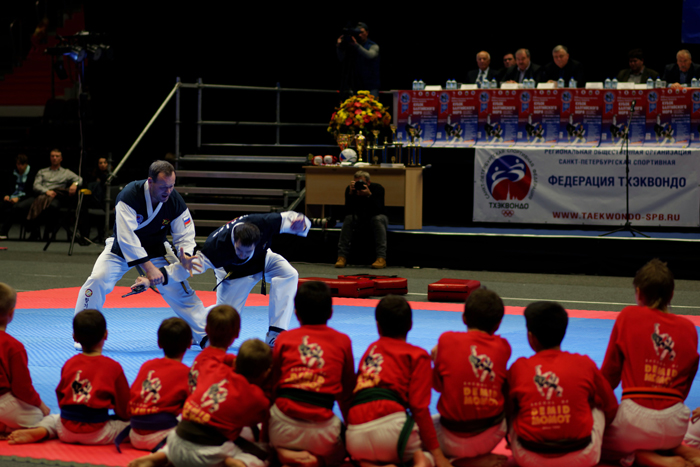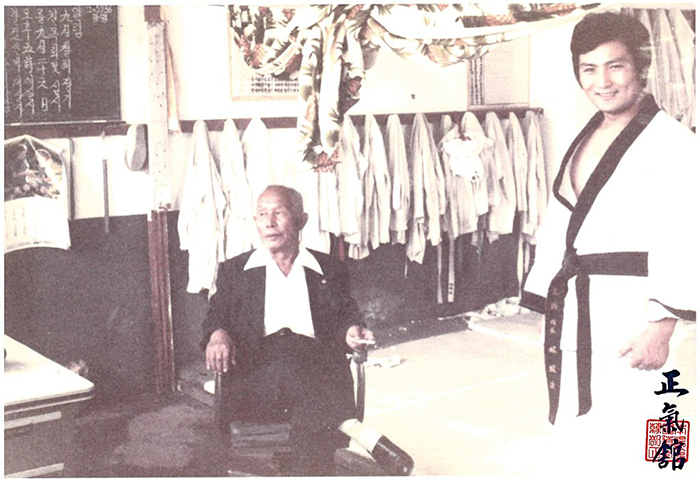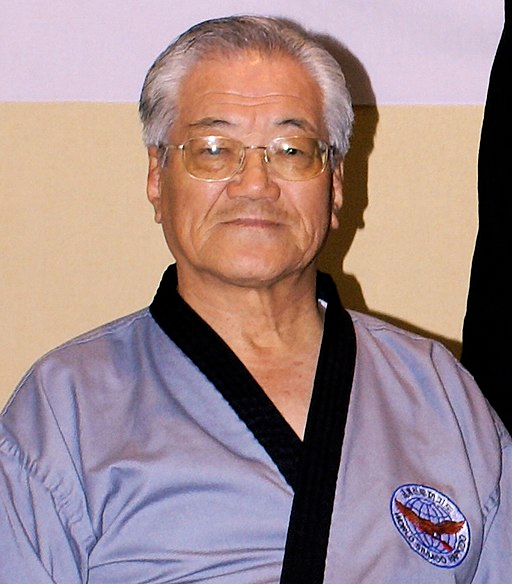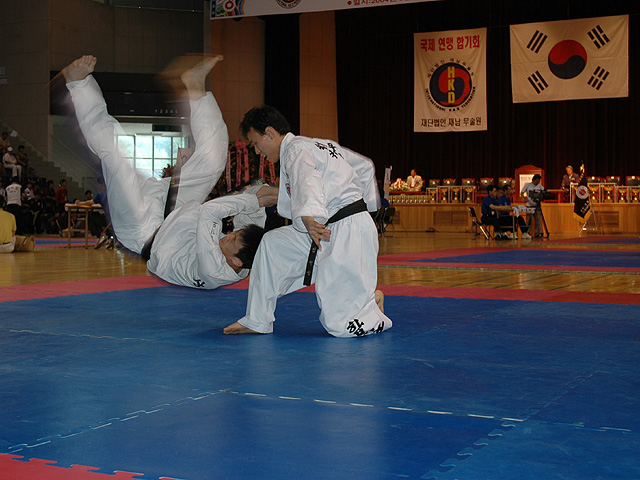Hapkido - Philosophy and Techniques of the Korean Martial Art

The Korean martial art of Hapkido focuses on practical self-defense methods. Hapkido is renowned for its complex style, which includes throws, joint locks, kicks, and punches. The martial art highlights using the energy of an opponent against them. This means Hapkido doesn’t rely on people’s strength, weight, or height, and people of different ages and physical capabilities can practice it.
Hapkido’s techniques are made to be quick and powerful, supporting both offensive and defensive tactics. Join me in discovering the origins of Hapkido and explaining its techniques and how they compare to other martial arts.
The History of Hapkido

Hapkido is a martial art that was created in Korea during the mid-20th century. It was developed by a martial artist named Choi Yong-Sool. Choi was born in 1904 in what is now South Korea. His parents died when he was just a kid, leaving him to be taken care of by his aunt.
Choi’s story is a troubling one, he says that he was abducted from his home village by a Japanese merchant who wanted a son. After resisting the kidnapping by the Japanese merchant, the merchant Choi was left on the streets of Moji, Japan. He was found by the Japanese authorities, who took him to a Buddhist temple where Choi was looked after and given schooling. Choi, being ethnically Korean, had a hard time assimilating into Japanese society and would often have fights with the other children.
One of the monks in the temple noticed Chois’s inability to assimilate and his tendency to violence and decided to introduce him to his friend, a man named Takeda Sokaku. This introduction would change the course of Choi’s life, as Takeda Sokaku was the creator of Daito-ryu Aiki-Jujutsu, a martial art style also known as Japanese Jujutsu. The martial arts journey of Choi took an interesting turn at this point as he became the houseboy for Takeda Sokaku and would learn the principles and techniques of Japanese Jujutsu.
After World War II, Korea was liberated from Japanese occupation, and Choi returned to his homeland. In the 1940s and 1950s, he began formalizing his martial art, combining the techniques he learned from various styles into what would later be known as Hapkido. The term “Hapkido” itself translates to “the way of coordinating energy” or “the way of harmony.”
Choi Yong-Sool formally introduced Hapkido to the public in the 1960s. Over time, martial arts gained popularity not only in Korea but also internationally. Various Hapkido organizations and schools were established, each with its own approach to the art.
Ji Han Jae

Ji Han Jae is another iconic South Korean Hapkido master. He also has a claim to the creation of Hapkido, as he was once a student of the legendary Choi Yong Sool. When Ji Han Jae started his martial arts journey in Hapkido, he was just a teenager. He began studying martial art under the guidance of Choi from 1949 until 1956.
Ji Han Jae moved to Seoul in 1956, where he went on to study various martial arts in an attempt to further his knowledge. In 1959, Ji Han Jae opened his own Hapkido martial arts and eventually created the first Hapkido association called the Korea Kido Association. Years later, he merged this association with the Korean Hapkido Association, a larger and more well-known organization.
The influence Ji Han Jae had on Hapkido cannot be denied. This is why there is a debate over who was really responsible for the introduction of Hapkido as a martial art. Some believe that it was Choi Yong Sool who was the original Hapkido founder, while others give credit to Ji Han Jae. I like to think that it was a blend between the two; Choi Yong Sool was responsible for founding it, and Ji Han Jae was great at promoting and teaching Hapkido.
Korea Hapkido Association
The Korea Hapkido Association was one of the biggest accomplishments of Ji Han Jae, and it has been significant in promoting Hapkido around the world. Since its founding, the name has changed to the Korea Hapkido Federation, but it is still the same organization. It is the world’s largest governing body for Hapkido, which is one of the main reasons Hapkido is so popular today.
Hapkido Training

Basic Strikes: Training in fundamental hand strikes such as punches, palm strikes, and knife-hand strikes.
Kicks: Learning a range of kicks, including front kicks, side kicks, roundhouse kicks, and spinning kicks.
Joint Locks: Practicing joint manipulation techniques to control or immobilize an opponent by manipulating their joints. This is a defining aspect of Hapkido techniques, and joint locks are one of the most practiced parts of Hapkido training.
Throws: Training in throwing techniques to off-balance and take down an opponent using their own energy.
Grappling: Developing skills in close-quarters combat, including clinching, escapes, and ground control.
Pressure Points: Understanding and applying techniques that target specific pressure points on the body for self-defense.
(Hyung) Drills: Practicing predefined sequences of movements that incorporate various techniques, these self defense drills are the base of Hapkido. Sometimes drills are simulated fight scenarios with multiple attackers where the Hapkido student must defend effectively.
Weapons Training: Some Hapkido schools include training with traditional martial arts weapons, such as the staff, wooden cane, and short stick.
Rolls and Falls: Learning how to fall and roll safely to minimize the risk of injury during throws or takedowns.
Breathing Exercises: Incorporating breathing techniques to enhance focus and well-being.
Self-Defense Techniques: Training in practical self-defense scenarios, including defenses against common grabs, holds, and attacks.
Philosophical and Ethical Principles: Understanding the philosophical aspects of Hapkido, including the emphasis on harmony, humility, and respect.
Sparring (Dae Ryun): Engaging in controlled, dynamic practice with a partner to apply techniques in a more realistic setting.
Breaking Techniques: Demonstrating power and precision by breaking boards or other materials with strikes and kicks.
Meditation and Mindfulness: Some schools practice meditation or mindfulness exercises to develop mental focus and discipline.
Physical Conditioning: As with many other martial arts, Hapkido practitioners also perform exercises to improve strength, flexibility, and overall physical fitness.
Ranking and Belt System: Advancing through a structured belt system to signify progress and skill level.
Hapkido Philosophy: Understanding the guiding principles of Hapkido, such as non-resistance, circular motion, and the water principle.
Different Styles of Hapkido
Traditional Hapkido: This is the original and foundational style of Hapkido as developed by Choi Yong-Sool and further refined by his students. It encompasses a wide range of techniques, including strikes, kicks, joint locks, and throws.
Sin Moo Hapkido: Founded by Ji Han Jae, Sin Moo Hapkido is a modern interpretation of Hapkido. Ji Han Jae sought to systematize Hapkido techniques and introduce a philosophical and spiritual component to the art. Overall, Sin Moo Hapkido is not so different from traditional Hapkido; it is slightly more technical and has a variation in philosophy.
Kuk Sool Won Hapkido: Kuk Sool Won is a comprehensive martial arts system that incorporates elements of Hapkido along with other traditional Korean martial arts. It includes a diverse range of techniques, from joint locks to kicks and strikes. Kuk Sool Won Hapkido also teaches sword forms and other weapons techniques specific to this type of Hapkido.
Hwa Rang Do: While not strictly Hapkido, Hwa Rang Do has roots in traditional Korean martial arts and shares some similarities with Hapkido. It includes a wide array of techniques, with an emphasis on self-defense, particularly joint locks and throws. Hwa Rang Do in practice looks a lot like Hapkido, sharing many of the techniques, and that is why it has made my list as a type of Hapkido style.
Combat Hapkido: This variant of Hapkido was developed by John Pellegrini in 1990, making it a more modern take on the martial art. Combat Hapkido focuses on practicality and blends elements of some other martial arts, such as Sambo, Judo, Jujutsu and western Boxing. Its aim is to be as effective as possible in close-range fighting.
The Philosophy of Hapkido
The fundamental principle of hapkido is to use your opponent’s force to your advantage in order to achieve effective self-defense. The focus of the art is on flexibility and adaptability, training practitioners to deflect and merge with an attack’s energy instead of confronting it head-on. The core idea of hapkido philosophy is non-resistance, which instructs practitioners to yield to force, find balance, and take advantage of their opponent’s weaknesses.
Hapkido recognizes that every person is different; therefore, the techniques in hapkido should be adjusted to the particular circumstances and traits of the practitioner as well as the opponent. This flexibility goes beyond technical skills to include mental and emotional components, encouraging a comprehensive approach to self-defense and personal growth.
Furthermore, Hapkido promotes the idea that success is not just dependent on strength. Instead, it emphasizes the need for Hapkido practitioners to gain a deep understanding of leverage, pressure points, and body mechanics. This is supposed to enable a weaker or smaller person to successfully defend against a stronger or larger opponent.
Hapkido’s philosophy is centered on the goal of self-mastery and harmony with one’s environment through the comprehensive integration of mind, body, and spirit. It’s a concept that affects how Hapkido practitioners face obstacles in their everyday lives and goes beyond the training mat.
Frequently Asked Questions
What is the difference between Hapkido and Taekwondo?
Taekwondo and Hapkido share one thing in common, both have Korean origins. Meaning the founders of both martial arts were from Korea. With the exception of their Korean origins, they are two very different styles.
Taekwondo is a kick-based martial art with no techniques involving locks and throws. It is designed to be athletic, and its best techniques involve powerful and complex kicks. Hapkido is based around joint locks, throws, and holds, and although it does involve some kicks, it is more grappling-based.
Is Hapkido better than Judo?
Judo and Hapkido are two very different martial arts. This is because Judo is designed in a more competitive form and allows athletes to compete in the sport at an Olympic level, whereas Hapkido is designed for self-defense. The styles of the throws are very different too, as Hapkido focuses a lot on throwing by the wrists and maneuvering people by their arms, while Judo emphasizes throws by the body.
How many years does it take to get a black belt in Hapkido?
Hapkido students must graduate several belts before reaching their first black belt. It usually takes around three years to reach a black belt; however, this time depends on the practitioner’s dedication to Hapkido and how often they are willing to practice.
Are Hapkido and Aikido the same thing?
Hapkido and Aikido do share some similarities, such as joint locks and throwing techniques; however, they are two different martial arts. They both come from a martial art called Daito-ryu Aiki-jujutsu, otherwise known as Japanese Jujutsu. Both martial arts take techniques from this Japanese martial art, but Hapkido is a Korean martial art and Aikido is Japanese, and they each have their own unique styles.
Overall thoughts on Hapkido
Hapkido is a martial art designed for self-defense. It teaches many types of techniques that emphasize throws and joint locks. Being a more modern martial art, Hapkido is quite successful in achieving a strong following, with many practitioners worldwide. Overall, Hapkido is an interesting martial art, and its background based on traditional styles which means it does the core fundamentals very well.









